Mohammad Teshnehlab
COVID-19 Detection Based on Blood Test Parameters using Various Artificial Intelligence Methods
Apr 02, 2024



Abstract:In 2019, the world faced a new challenge: a COVID-19 disease caused by the novel coronavirus, SARS-CoV-2. The virus rapidly spread across the globe, leading to a high rate of mortality, which prompted health organizations to take measures to control its transmission. Early disease detection is crucial in the treatment process, and computer-based automatic detection systems have been developed to aid in this effort. These systems often rely on artificial intelligence (AI) approaches such as machine learning, neural networks, fuzzy systems, and deep learning to classify diseases. This study aimed to differentiate COVID-19 patients from others using self-categorizing classifiers and employing various AI methods. This study used two datasets: the blood test samples and radiography images. The best results for the blood test samples obtained from San Raphael Hospital, which include two classes of individuals, those with COVID-19 and those with non-COVID diseases, were achieved through the use of the Ensemble method (a combination of a neural network and two machines learning methods). The results showed that this approach for COVID-19 diagnosis is cost-effective and provides results in a shorter amount of time than other methods. The proposed model achieved an accuracy of 94.09% on the dataset used. Secondly, the radiographic images were divided into four classes: normal, viral pneumonia, ground glass opacity, and COVID-19 infection. These were used for segmentation and classification. The lung lobes were extracted from the images and then categorized into specific classes. We achieved an accuracy of 91.1% on the image dataset. Generally, this study highlights the potential of AI in detecting and managing COVID-19 and underscores the importance of continued research and development in this field.
ENet-21: An Optimized light CNN Structure for Lane Detection
Mar 28, 2024Abstract:Lane detection for autonomous vehicles is an important concept, yet it is a challenging issue of driver assistance systems in modern vehicles. The emergence of deep learning leads to significant progress in self-driving cars. Conventional deep learning-based methods handle lane detection problems as a binary segmentation task and determine whether a pixel belongs to a line. These methods rely on the assumption of a fixed number of lanes, which does not always work. This study aims to develop an optimal structure for the lane detection problem, offering a promising solution for driver assistance features in modern vehicles by utilizing a machine learning method consisting of binary segmentation and Affinity Fields that can manage varying numbers of lanes and lane change scenarios. In this approach, the Convolutional Neural Network (CNN), is selected as a feature extractor, and the final output is obtained through clustering of the semantic segmentation and Affinity Field outputs. Our method uses less complex CNN architecture than exi
An Overview on Artificial Intelligence Techniques for Diagnosis of Schizophrenia Based on Magnetic Resonance Imaging Modalities: Methods, Challenges, and Future Works
Feb 24, 2021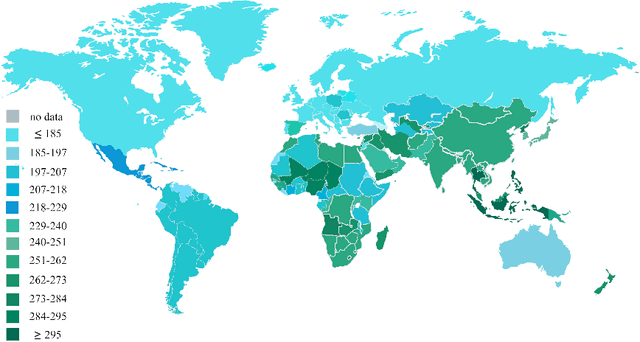
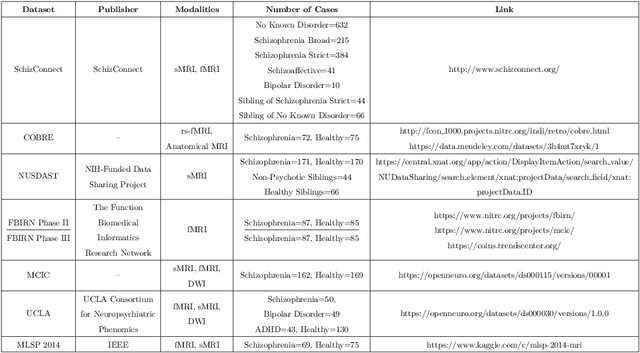
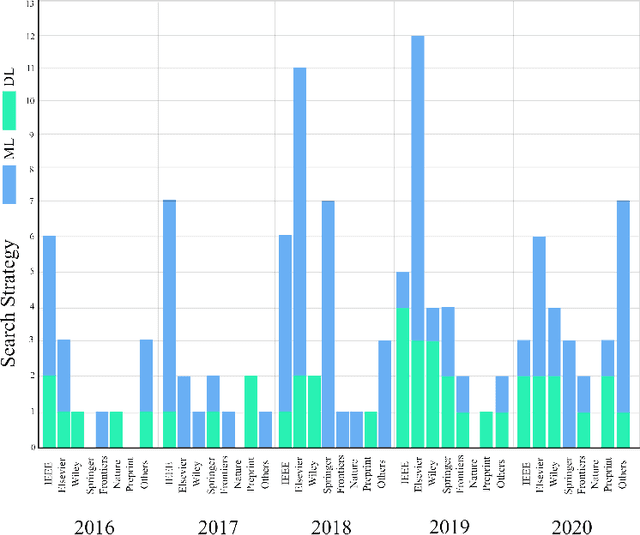
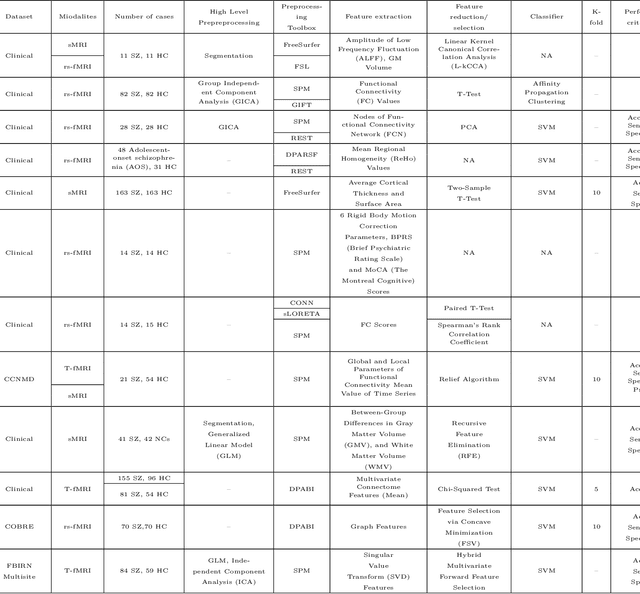
Abstract:Schizophrenia (SZ) is a mental disorder that typically emerges in late adolescence or early adulthood. It reduces the life expectancy of patients by 15 years. Abnormal behavior, perception of emotions, social relationships, and reality perception are among its most significant symptoms. Past studies have revealed the temporal and anterior lobes of hippocampus regions of brain get affected by SZ. Also, increased volume of cerebrospinal fluid (CSF) and decreased volume of white and gray matter can be observed due to this disease. The magnetic resonance imaging (MRI) is the popular neuroimaging technique used to explore structural/functional brain abnormalities in SZ disorder owing to its high spatial resolution. Various artificial intelligence (AI) techniques have been employed with advanced image/signal processing methods to obtain accurate diagnosis of SZ. This paper presents a comprehensive overview of studies conducted on automated diagnosis of SZ using MRI modalities. Main findings, various challenges, and future works in developing the automated SZ detection are described in this paper.
A Novel Deep Learning Method for Textual Sentiment Analysis
Feb 23, 2021
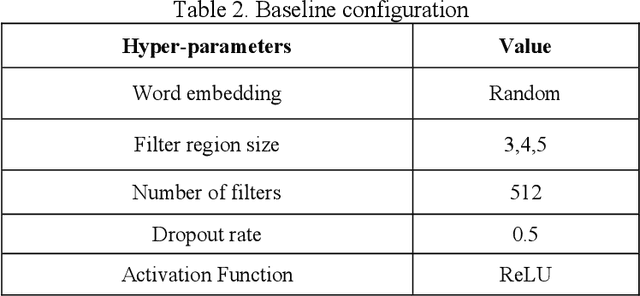
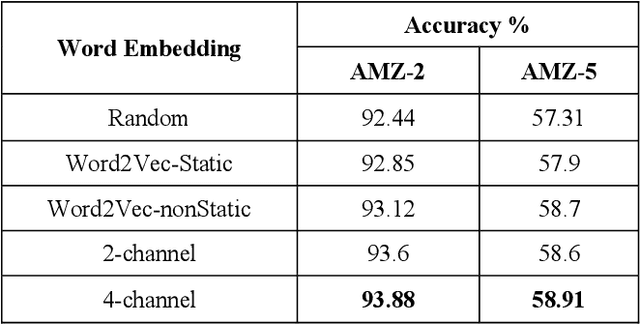
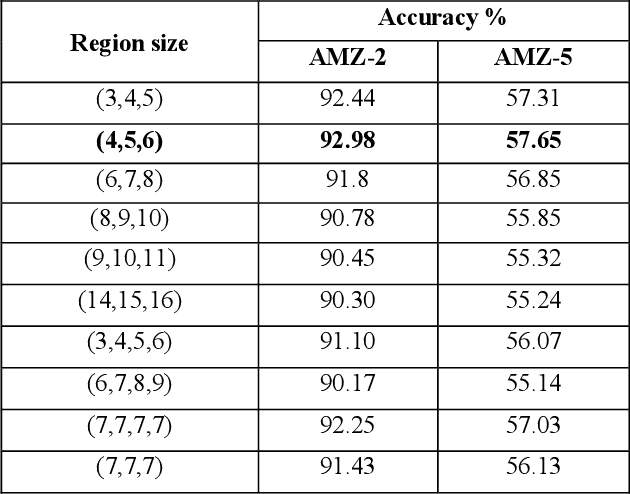
Abstract:Sentiment analysis is known as one of the most crucial tasks in the field of natural language processing and Convolutional Neural Network (CNN) is one of those prominent models that is commonly used for this aim. Although convolutional neural networks have obtained remarkable results in recent years, they are still confronted with some limitations. Firstly, they consider that all words in a sentence have equal contributions in the sentence meaning representation and are not able to extract informative words. Secondly, they require a large number of training data to obtain considerable results while they have many parameters that must be accurately adjusted. To this end, a convolutional neural network integrated with a hierarchical attention layer is proposed which is able to extract informative words and assign them higher weight. Moreover, the effect of transfer learning that transfers knowledge learned in the source domain to the target domain with the aim of improving the performance is also explored. Based on the empirical results, the proposed model not only has higher classification accuracy and can extract informative words but also applying incremental transfer learning can significantly enhance the classification performance.
 Add to Chrome
Add to Chrome Add to Firefox
Add to Firefox Add to Edge
Add to Edge